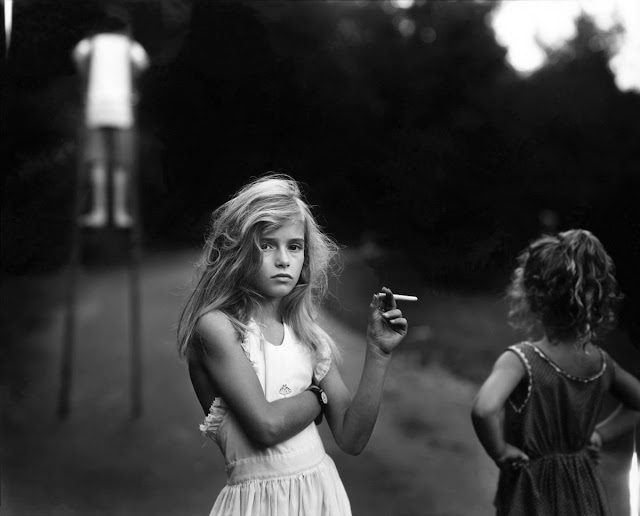Gregory Crewdson: Large Scale Cinematic Photographs
When photography was in its infancy, large format photography dominated, and the use of photographic plates and chemicals was the norm. As photographic technology evolved, photographers migrated from plates to negatives, and from box cameras to rangefinders. Soon, only Hollywood movies would need crew and equipment on a large scale. Not so with Gregory Crewdson, who makes use of epic sets and lighting equipment to create images worthy of the cinema.
Gregory Crewdson is an American photographer most known for his epic sized tableauxs of Americana that are more reminiscent of film cinematography. Based in Based in New York, Crewdson grew up in Brooklyn, and later studied at the State University of New York and at the Yale School of Art (where he now teaches at the graduate level).
Crewdson's photographs are sometimes compared to the works of Edward Hopper where scenes seem subdued on initial viewing, yet convey a story larger than their initial impression. Like Hopper's paintings, Crewdson is drawn to common features of America, most notably suburban towns and quiet landscapes, and adds subjects or elements with a certain discord. Other photographic inspirations include William Eggleston, whose documentary work of mid 20th century America has been featured here several times in the past.
To create these monumental visions, Crewdson relies on several hundred crew and actors, along with dozens of lights, modifiers and props. The large scale of his productions can mean that his sets are sometimes mistaken for a big-budget action film. While the enormous and complicated setups suggests a grand and action-packed photo, the final outputs are most often than not subdued and somber; in contrast to the expansive settings, his subjects are usually lonely people, sometimes looking down or off to the camera, projecting a feeling of being disconnected. Even in photographs with two or more people, the subjects feel even more detached from each other.
Aside from the subjects, all other aspects of the image are carefully choreographed. Composition, color and objects of the "photographic paintings" are meticulously thought out, from the buildings or forests that make the spacious backdrop, to the smallest lamp, soda can or ruffled blanket. These seemingly smaller details are well thought out (both during and post-production), even down to inconspicuous lights in small windows that are off-center; these may be lit on or off depending on Crewdson's initial direction, and in many cases photoshopped later on according to Crewdson overall artistic vision.
The locations, too, become a second subject for the photographer. Sometimes, an old film might be the source of inspiration for Crewdson (like "Close Encounters of the Third Kind"), and in others, he'll visit and revisit the place several times to see the potential photograph at different times of day and in different lights.
In some of his projects, it's the absence of light that becomes the inspiration. In Crewdson's earlier work "Twilight" (from 1998 to 2022), nightscapes take centerstage, and the nocturnal settings of his photographs embrace the viewers in feelings of wonder as well as trepidation.
In these settings, Crewdson directs his actors in the scene, although the final results show little action happening in the photographs; the subjects are usually lying down splayed across a couch or standing hunched over, yet they convey so much of a story. It seems that the absence of activity makes for a better story, as the viewer can take their time looking through the scene before deciding on the message of Crewdson's panoramic vision.
In the end, creating a whole new world from snapshots of reality, and these worlds took on a updated meaning post COVID19 pandemic, where forced isolation and prolonged quarantine forced everyone to become more comfortable in the monotony of every day. This feeling is just one of what Crewdson would like the viewer to anticipate; the feeling of both a familiar and strange (just like liminal spaces discussed with Todd Hido).
Oftentime, being surrounded by familiar scenes can be a source of comfort, but by adding an element of discord (for example, an unopened bag of chips, or an empty kitchen at 3AM), the feeling becomes unnerving and surreal. These nocturnal or even diurnal scenes make Crewdson's work akin like movies rather than a single photograph, where "fantastical worlds become seamlessly real", yet still fantastical.
Gregory Crewdson's latest book is Alone Street (published in 2021) which collects two of his previous works: Cathedral of Pines (2016) and An Eclipse of Moths (2020). His other popular works include Twilight: Photographs (2022), which focuses on large-scale urban landscapes in artificially lit scenes, and Beneath the Roses which looks at smaller settings of homes and towns, but equally charged with certain disquiet.
- Get Gregory Crewdson: Alone Street here
- Get Twilight: Photographs here
- Get Beneath the Roses here













Comments
Post a Comment